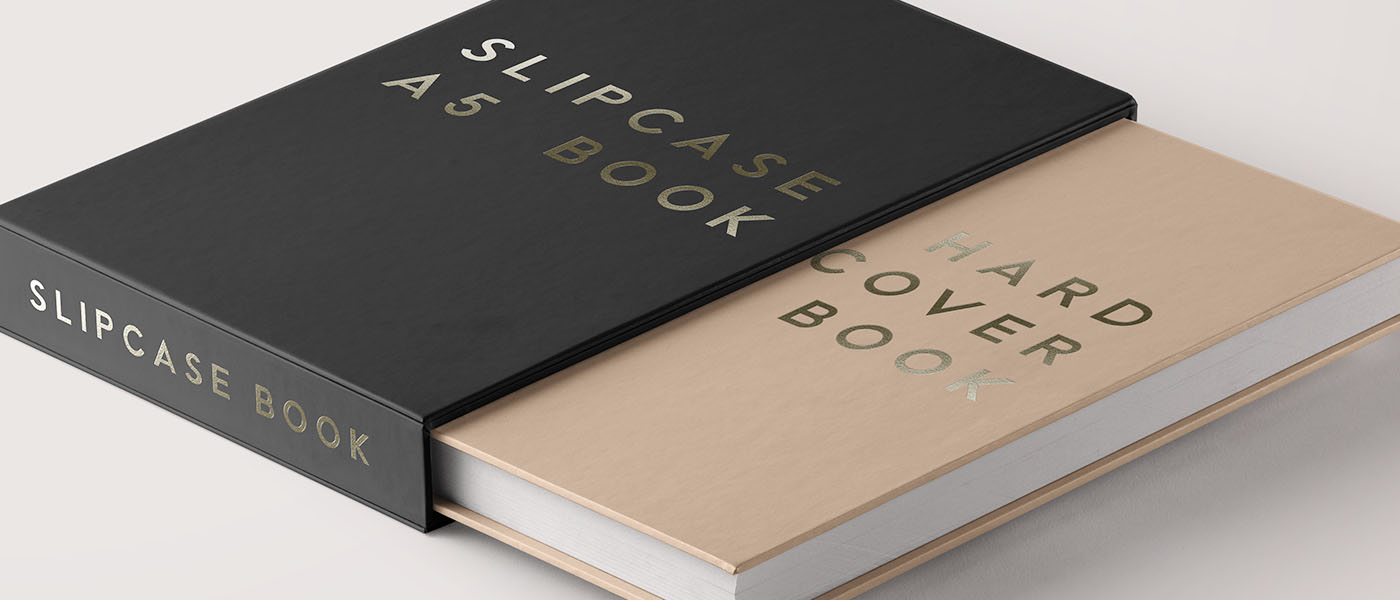Hardcover Books That Belong on Your Living Room Display
Hardcover Books That Belong on Your Living Room Display
Blog Article
A Comprehensive Overview to the Refine of Hardcover Books Printing
When you begin the trip of hardcover book printing, understanding the whole process is important. As you navigate with binding and quality control, you'll locate that every choice influences the book's total allure.
Understanding the Hardcover Publication Structure
When you check out the world of hardbound publications, you'll swiftly discover that their structure is intentional and distinct. The outer case, frequently made of tough cardboard, gives resilience and defense. You'll discover a fabric or leather treatment, which not only boosts visual appeals but likewise contributes to the publication's durability. Inside, the endpapers connect the cover to the text block, guaranteeing a seamless interchange.
The text block itself includes numerous trademarks, or folded sheets, stitched with each other for strength. You'll see that the spine is reinforced, permitting a smooth lay-flat reading experience - hardcover books. Furthermore, the book's weight typically communicates a sense of quality and permanence
Hardbound publications usually include a dust coat, which acts as an advertising device while safeguarding the cover. Comprehending these aspects helps you value the workmanship behind hardcover publications and their special appeal in the literary world.
Manuscript Preparation and Editing
Obtaining your manuscript ready for printing is essential, and it starts with appropriate format guidelines. You'll require to understand the editing process to improve your job and ensure it resonates with visitors. Plus, understanding proofreading strategies can aid you catch those bothersome errors prior to your publication mosts likely to publish.

Manuscript Formatting Standards
Correct manuscript format is essential for creating a professional-looking hardcover book. Begin by picking a basic font like Times New Roman or Arial in 12-point size. Use double-spacing throughout the record to boost readability. Establish your margins to 1 inch on all sides, offering your text room to breathe. Number your web pages in the leading right edge, and include your chapter titles at the start of each new area. Use clear headings to suggest areas, and prevent too much formatting like vibrant or italics unless necessary. See to it to proofread your manuscript for uniformity in style, making certain that whatever from spelling to spacing complies with your chosen standards. Following these actions will set a strong foundation for your book.
Modifying Refine Fundamentals
Modifying your manuscript is an essential action that can transform it from an outline right into a polished end product. Begin by reviewing your work seriously, concentrating on clarity, flow, and framework. Search for inconsistencies in your narrative, character development, or argumentation. It's useful to take breaks in between rounds of modifying to acquire fresh point of views. Don't be reluctant to reduce unneeded material or rephrase unpleasant sentences; this will improve readability. Consider seeking responses from relied on peers or specialist editors who can offer useful understandings. Remember, editing isn't just concerning taking care of errors; it's concerning fine-tuning your voice and guaranteeing your message reverberates with readers. Embrace the procedure, and you'll see your manuscript luster.
Checking Methods Review
Once you've polished your manuscript with modifying, the next action is to assure it's cost-free of mistakes that can sidetrack viewers. Review your manuscript aloud-- this helps you hear awkward phrasing and spot typos. Consider printing your manuscript; reading on paper can reveal mistakes that displays miss out on.
Creating guide Cover and Inside
When you're making your publication cover and inside, you'll intend to concentrate on essential design elements that capture your target market's focus. Picking the right typography designs and carefully selecting shades and images can make all the distinction in communicating your book's theme. Let's explore just how these selections can raise your work and draw in readers.
Vital Layout Components
Developing an eye-catching publication cover and a properly designed interior is important for attracting viewers and boosting their experience. Beginning with the cover; it's your impression. Choose colors and images that mirror your publication's style and mood. Make certain your title sticks out and is clear, even in thumbnail dimension.
A clean, well organized design assists viewers browse effortlessly. Bear in mind, a cohesive design throughout your book cultivates a professional appearance that can greatly affect a visitor's choice to pick it up.
Picking Typography Designs
Typography plays a crucial role in both guide cover and interior decoration, forming how visitors view your content. When selecting typography styles, consider your book's category and target audience. A timeless serif font might work well for literary fiction, while a modern-day sans-serif might fit a modern novel. Guarantee readability; your message should be simple on the eyes, especially for longer flows. Take notice of font dimension and line spacing, as these components influence overall flow. Blending fonts can include rate of interest, yet restrict it to 2 or 3 to preserve comprehensibility. Lastly, think of power structure-- utilize different designs for headings and body message to assist visitors easily via your job. Your typography choices will significantly affect the reader's experience.
Color and Images Choice
Choosing the appropriate colors and images is essential for recording visitors' attention and sharing your book's motifs. Begin by considering your genre; vivid shades could benefit a youngsters's book, while soft tones match an enigma story. hardcover books. Usage images that resonates with your web content-- pictures, illustrations, or abstract layouts can enhance your message
Consider the feelings you wish to stimulate. Warm shades can produce excitement, while cool colors frequently share calmness. When creating the cover, make certain the imagery doesn't overwhelm the title and writer's name; clarity is vital. Inside, use regular color pattern that match your typography. This cohesive technique not just raises your publication's visual but likewise enhances the viewers's why not check here experience, making it much more remarkable.
Choosing the Right Paper and Materials
When picking paper and materials for your hardcover book, it's vital to contemplate how they'll influence the overall look and feeling of your job. Begin by picking the appropriate paper weight; heavier supply often shares top quality and sturdiness, while lighter paper can develop a more delicate touch. Take into consideration the coating as well; glossy paper boosts images and colors, while matte can give an advanced, understated appearance.
Don't forget the cover materials. Cloth, natural leather, or published paper can set the tone for your publication. Choose for acid-free paper to stop yellowing over time if your project includes pictures. Additionally, think of the binding materials; making use of top quality glue warranties your publication lasts.
Inevitably, the selections you make right here show your vision, so put in the time to sample different materials (hardcover books). Your choices will certainly help produce a publication that's not only aesthetically enticing however practical and also sturdy
The Printing Process: Strategies and Technologies
A range of printing methods and modern technologies can bring your hardcover publication to life, each offering distinct advantages. Digital printing is a preferred choice for brief runs, permitting for quick turn-around and economical services. When you need to print smaller amounts without giving up quality, it's excellent. On the various other hand, balanced out printing excels in creating big volumes, providing constant and top quality results. This approach is ideal for extensive magazines where shade accuracy and fine details matter.
Understanding these methods aids you make informed choices, ensuring your hardbound publication not just looks great but additionally fulfills your production needs successfully. Pick the best technique to raise your book's charm and impact.
Binding Methods for Hardbound Books
Several binding techniques can change your hardcover publication into a sturdy and appealing product. One popular alternative holds true binding technique, where the pages are stitched together and after that affixed to a stiff cover. This offers outstanding toughness and an expert look. An additional technique is the excellent binding, which utilizes adhesive to hold the pages together, permitting for a smooth spinal column but less longevity contrasted to situation binding.
You might likewise take into consideration spiral binding, which allows your book to lay level, making it perfect for workbooks or guidebooks. Each binding technique has its benefits and fits various demands, so think about your publication's function and target market when choosing the finest alternative for your project.
Quality Assurance and Final Touches
After picking the right binding technique for your hardbound book, quality assurance ends up being vital to verify your final item meets your assumptions. Beginning by examining the printed pages for any type of errors or inconsistencies in color Get More Info and design. You don't want to miss any kind of typos or misprints that might impact your readers' experience.
Next, inspect the binding integrity. Confirm the web pages are securely affixed which the spinal column is tough. A well-bound publication not only looks expert however also really feels resilient in your hands.
Furthermore, focus on the cover. Search for any scuff marks or misalignments in the art work. click to read If you have actually gone with special coatings like embossing or foil stamping, make certain they're used continually across all copies.
Lastly, conduct a comprehensive assessment of the whole batch prior to transferring to circulation. By doing this, you can validate that every publication shows your high criteria.
Regularly Asked Concerns
How much time Does the Hardbound Publication Printing Process Usually Take?

What Is the Minimum Order Amount for Hardbound Books?
The minimum order quantity for hardcover books generally begin around 100 copies, yet it can vary based upon the printer. You need to contact your picked printing service for their details demands and prices.

Can I Print Hardcover Books in Custom-made Sizes?
Yes, you can print hardcover publications in custom-made dimensions. Many printing solutions provide adaptability with measurements, enabling you to pick a format that matches your project. Simply validate the specs prior to putting your order.
Are There Eco-Friendly Options for Hardcover Book Printing?
Yes, you can find green alternatives for hardcover publication printing. Several firms use recycled materials and lasting inks. Simply ask your printer concerning their eco-friendly techniques to guarantee your task straightens with your ecological worths.
What Are the Prices Connected With Hardbound Book Printing?
When thinking about hardcover book printing costs, you'll need to consider products, design, and printing techniques. Extra costs like shipping and binding can additionally affect your total spending plan, so plan as necessary for your task.
When you start the trip of hardcover book printing, recognizing the entire process is necessary.A variety of printing strategies and modern technologies can bring your hardbound publication to life, each offering distinct advantages. Just how Long Does the Hardcover Publication Printing Process Generally Take?
The hardbound publication printing process generally takes around 2 to 6 weeks.Yes, you can find eco-friendly alternatives for hardcover publication printing.
Report this page